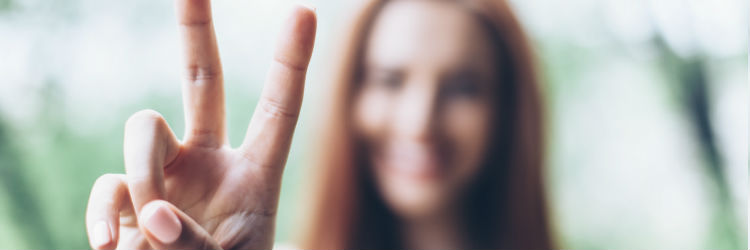How to find peace in today’s world

There are many states of peace: to be in a personal element of freedom from anxiety, unnecessary concerns, noise or unwanted confrontation. Or for communities, countries and the world to be free from war, violence and aggressive conflict. But to be at peace with the world, we must first be at peace with ourselves. Tiddy Rowan, author of The Little Book of Peace: Finding Tranquillity in a Troubled World, discusses how and why this beautiful little book came about, and why we need it more than ever.
I went to Paris in November to spend a peaceful week relaxing after a busy work spell. I wanted to wander around some galleries, see friends and most of all sit on café pavements to watch the world go by and to think some new thoughts. The apartment where I was staying was in the Marais, a fifteen- minute walk from the Bataclan theatre. I had just come back in after meeting a friend for a drink and I switched on the television to watch the news – the news I had not yet heard. The brutal massacre at the theatre and nearby cafés was being reported on television, in real time. I could hear the same sirens through my open window, as the ambulances and emergency services raced towards the stricken areas that Friday night, where a hundred and thirty innocent people died and more than three hundred and fifty were wounded.
Saturday was a day of aftershock. Most of Paris stayed inside – dealing with their grief or outrage. One old man at the otherwise empty supermarket told me it reminded him of Paris under siege during the war. Sunday was a bright sunny day, which contrasted with the sadness, the grief and the disbelief. I met friends for lunch on the Île Saint- Louis in the centre of Paris. We ate outside at a pavement table; we walked in the sunshine among the usual throng of people enjoying a beautiful city – but one that had been so viciously wounded two days earlier. At dusk we joined thousands of people for a vigil outside the Notre Dame cathedral, where the ancient bells tolled for the recently dead.
In the days that followed, I was struck by a sense of shared defiance on the streets. People passing acknowledged one another with a look, a brief smile, a nod . . . as though commiserating in peaceful camaraderie. The united strength was palpable and impressive in the face of terror. I did sit in cafés and meet with friends, but my thoughts had now turned to how peace could come from terror; the importance of holding on to our own inner peace and strength in the face of adversity and how so many Parisians, and world citizens, were thinking the same thing. I started to think of different aspects of peace, and the importance of making the connection between our inner peace of mind and the outer peace of the world. Since each of us is connected with the world and all the events that trigger or threaten our peace, it is important, it seemed to me, to open our eyes and senses to the world around us. Our relationships with other people, on whatever level – family, friendships, work – are ultimately connected to our inner peace and vice versa, so that our lives are one continuous interaction with the world.
Neither words nor an ideal can comfort the loss of someone close in unpeaceful circumstances – in that moment. In order for the words not to remain merely ideological, though, I believe it is within all of us to increase our own levels of peacefulness and, through understanding and compassion, make a contribution to developing a more peaceful world. I resolved to research peace in all its hues and to glean insights from experts and thinkers on how to conduct our internal and external worlds so that we may find ways of bridging the gap between the two. I resolved, too, to discover how we can strive to live a more peaceful existence despite, or even because of, the odds so often stacked against it.
‘Peace is not simply the absence of war; it is a virtue, a state of mind, a disposition for benevolence, confidence and justice.’ Spinoza


